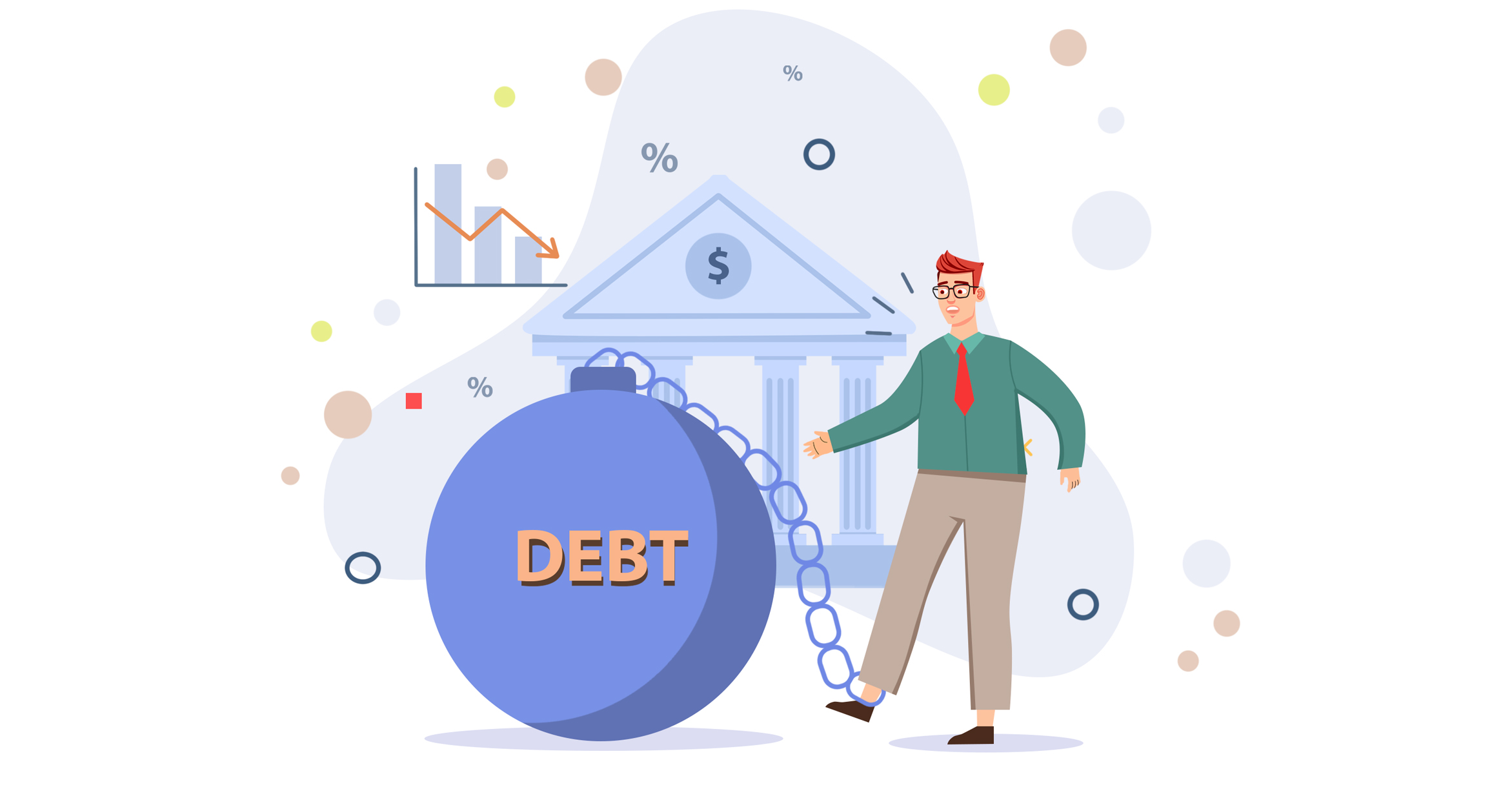
If you're into investing, it's really important to understand this thing called "debt financing." Basically, it's a way for companies to get money when they need it by borrowing from different places. Instead of asking for donations or selling shares of the company, they borrow money from different sources.
So, why do companies do this? Well, borrowing money allows them to fund their operations or expand their business without giving away ownership. It's like taking a loan from a bank to buy a car or a house but on a larger scale.
Companies take on debt with the understanding that they have to pay back the borrowed money, usually with some extra amount called "interest." They agree on a specific time period to repay the loan. This way, the lenders, who are the investors, make money through the interest charged on the loan.
Debt financing involves borrowing money to fund a business's operations or expansion. Companies take on debt with the understanding that they will repay the borrowed amount, usually with interest, over a specified period. Investors play a crucial role in debt financing by lending their money to these businesses, earning interest on their investments.
Now, let's explore the different sources from which companies can obtain debt financing. These sources can vary based on factors like the company's size, creditworthiness, and the purpose of the funds.
Here are some common sources of debt financing:
Bank Loans
When a business wants to borrow money from a bank, the bank checks how reliable and trustworthy the business is with money. They want to make sure the business can pay back the loan. This assessment of how likely the business is to repay the loan is called "creditworthiness."
Now, bank loans can be either short-term or long-term. Short-term loans are meant to be repaid within a year, while long-term loans have a longer repayment period, usually several years.
Here's the interesting part: the interest rates charged by banks may vary based on how risky they think the business is. If the business is seen as less risky, the interest rate might be lower. But if the business is considered more risky, the interest rate might be higher to account for that risk.
So, to sum it up, banks are the traditional lenders that offer different loan options to businesses. Before approving a loan, they evaluate how reliable the business is with money. The loans can be short-term or long-term, and the interest rates may vary based on the perceived riskiness of the borrower.
Bonds
You know how when you lend money to someone, they promise to pay you back, right? Well, bonds work in a similar way. When you invest in a bond, you're basical ly lending money to a company or the government.
The cool thing about bonds is that they come with fixed interest rates. This means that the issuer agrees to pay you a set amount of interest at regular intervals. So, while they have your money, they're also giving you some extra cash as a way of saying thanks for lending to them.
But wait, there's more! Bonds also have a maturity date, which is like the day when the issuer has to give you back the money you lent them. When that date arrives, you receive the full amount you initially invested, which is called the principal.
So, imagine you invest in a bond issued by a company. They promise to pay you regular interest payments until the maturity date, and on that date, they'll give you back the full amount you originally lent them. It's a win-win situation because you earn interest along the way and get your money back when the bond matures.
That's the gist of it! Bonds are a way for companies and governments to borrow money from people like us, and in return, they pay us interest and eventually repay the entire borrowed amount.
Lines of Credit
Lines of credit are like flexible borrowing arrangements for businesses. They work just like a credit card but with a predetermined credit limit. This means that the business knows the maximum amount of money it can borrow.
The cool thing about lines of credit is that businesses can borrow from this credit limit whenever they need funds. So, let's say a company needs to buy some equipment or pay for unexpected expenses. They can take money from the line of credit to cover these costs.
But here's the best part: once they've used the line of credit and borrowed some money, they can repay it whenever they have enough funds. And if they need to borrow again in the future, they can do that too!
Of course, just like with any borrowing, there's a catch. When a business borrows money from a line of credit, they need to pay back not only the borrowed amount but also some extra money called "interest." It's like a fee for using the borrowed funds.
So, lines of credit give businesses the flexibility to access funds as needed, just like we use our credit cards. They can borrow, repay, and borrow again as long as they stay within the predetermined credit limit. And of course, interest is charged on the amount they borrow.
Trade Credit
Trade credit is an agreement between a business and its suppliers. It allows the business to buy goods or services from the suppliers on credit, which means they don't have to pay right away. Instead, they get a certain period of time to settle the payment.
This arrangement helps businesses by providing them with what's called "working capital." Working capital is like the money they need to run their day-to-day operations smoothly. By using trade credit, businesses can purchase the necessary goods or services without having to immediately spend their own cash reserves.
Now, the cool thing about trade credit is that the specific terms of payment can vary. But usually, businesses get around 30 to 90 days to pay off the amount they owe to their suppliers.
So, imagine a business needs to buy inventory or raw materials from a supplier. Instead of paying upfront, they can make use of trade credit and buy those items on credit. This gives them some breathing room to sell the products, generate revenue, and then use that revenue to pay back the supplier within the agreed-upon time frame.
In a nutshell, trade credit is an arrangement that allows businesses to buy things on credit from their suppliers. It gives them some time to pay back the supplier, which helps with their working capital needs. The specific payment terms usually range from 30 to 90 days.
Peer-to-Peer Lending
Have you ever heard of borrowing money from someone you know, like a family member or a friend? Well, imagine if there was a way to borrow money from regular people, just like us, but on a larger scale. That's what peer-to-peer lending is all about.
Peer-to-peer lending platforms are online platforms that connect individuals who want to lend money with businesses or other individuals who need loans. These platforms make it possible for people to borrow and lend money outside of traditional banks or financial institutions.
Here's how it works: let's say a business or an individual needs a loan. Instead of going to a bank, they can turn to a peer-to-peer lending platform. On the other side, there are individuals like you and me who are willing to lend money to those in need.
The interesting part is that these platforms help facilitate the borrowing and lending process. They create a safe and secure environment where borrowers and lenders can connect and make loan transactions happen.
When it comes to the interest rates and terms of the loan, it can work in a couple of ways. Sometimes, the platform itself sets the interest rates and terms based on various factors. Other times, the borrowers and lenders can negotiate among themselves to come up with an agreement that works for both parties.
So, peer-to-peer lending is all about connecting regular people who want to lend money with businesses or individuals who need loans. It's done through online platforms, and the interest rates and terms can be determined either by the platform or through negotiations between the borrowers and lenders.
Understanding the different sources of debt financing is essential for investors. By comprehending how businesses raise funds through debt, you can evaluate the risk and potential return on your investment. Remember, each source of debt financing has its own terms, interest rates, and repayment schedules, so it's crucial to conduct thorough research and assess the financial health of the companies you're considering investing in.
You will receive the information that help to do investments.
Note: Check the spam folder if you don't receive an email.
